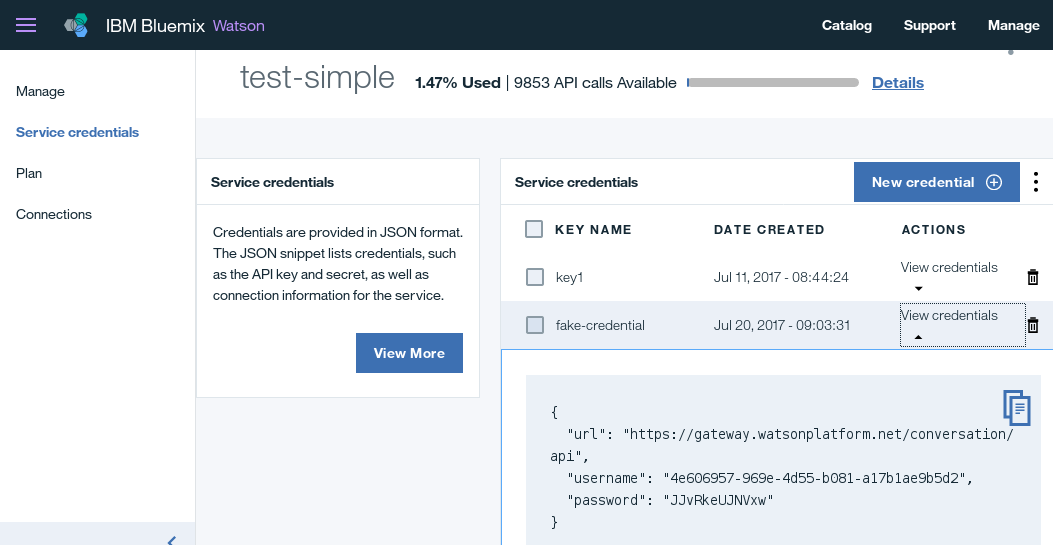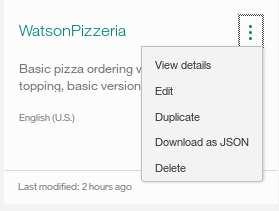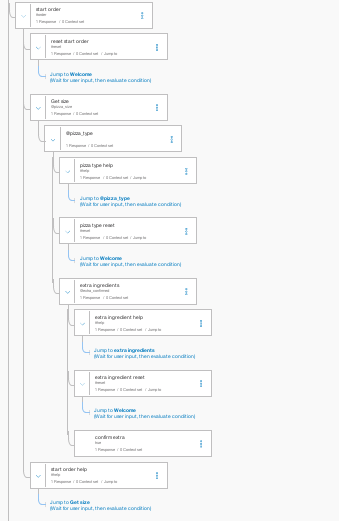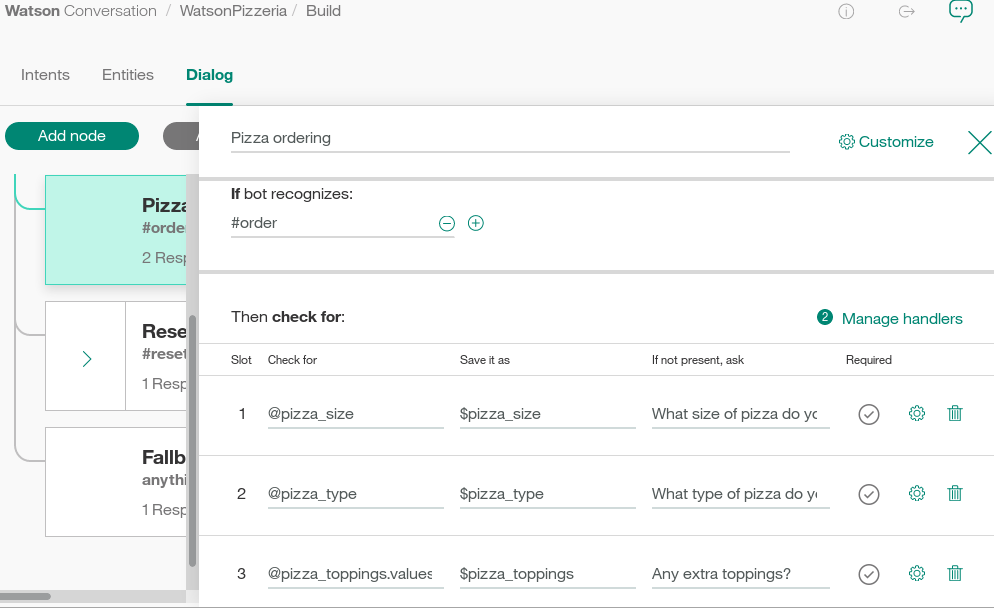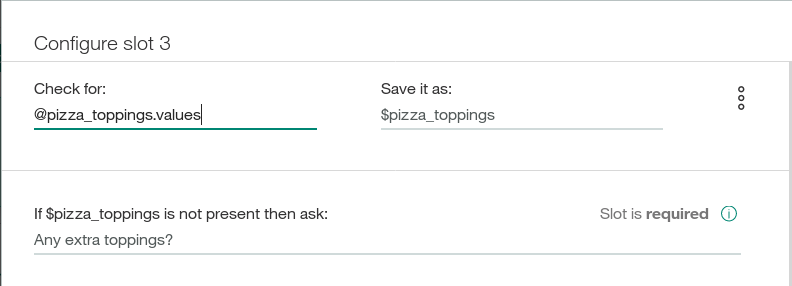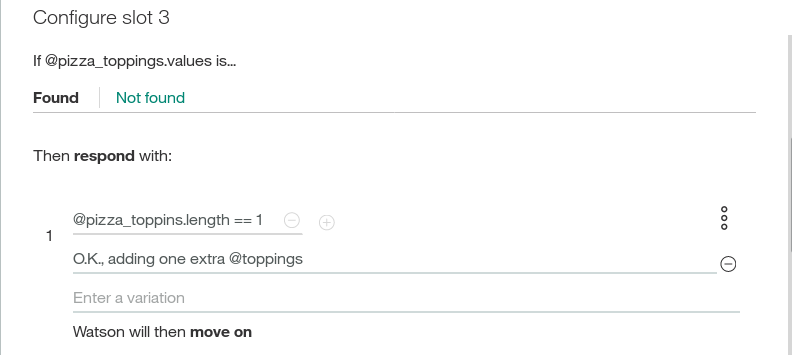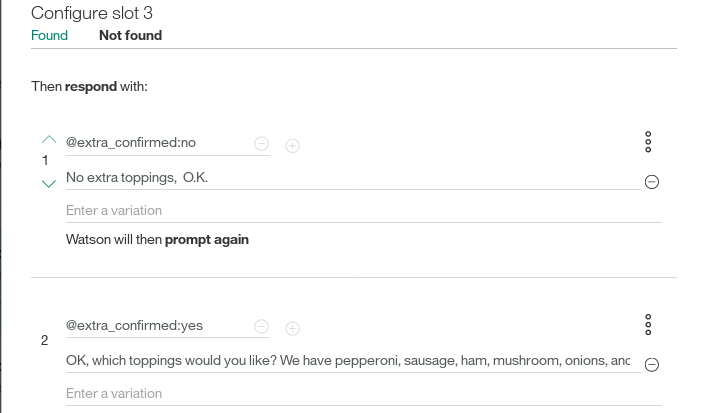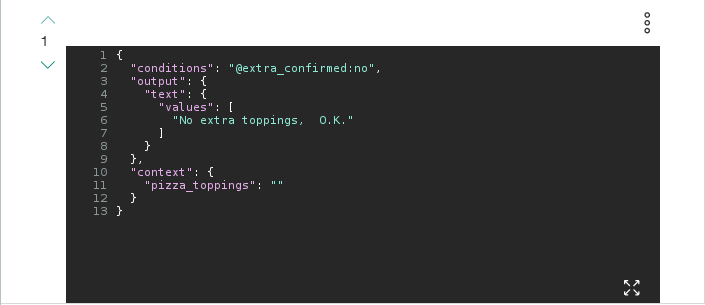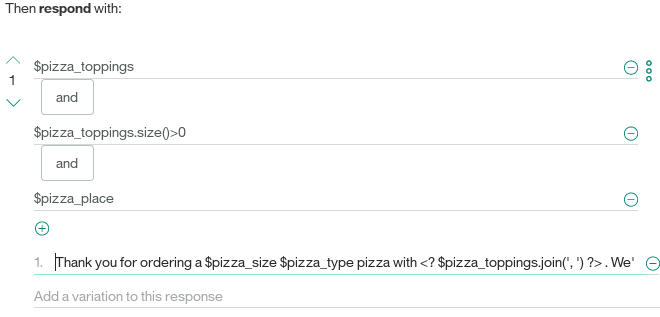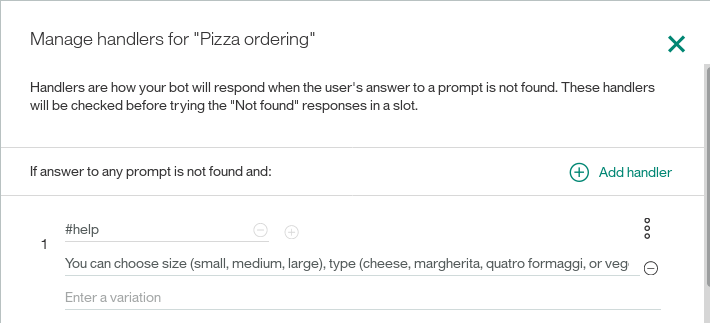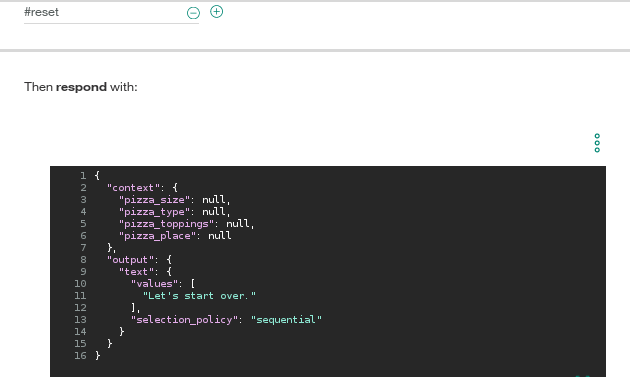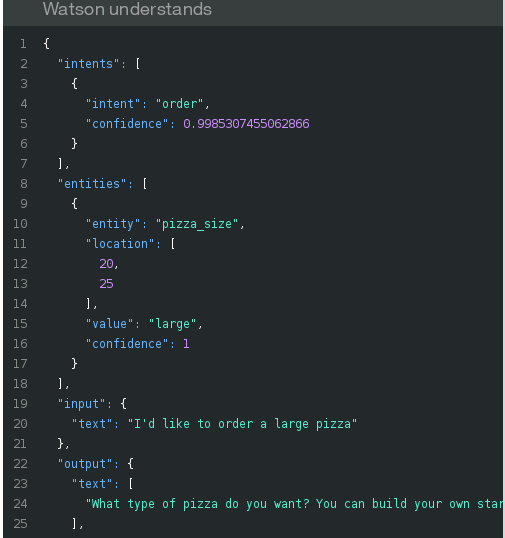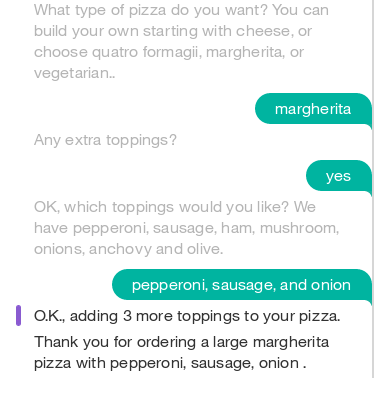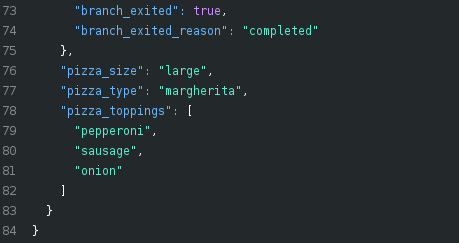Creating a Pizza ordering Chatbot using Watson Conversation Slots feature
In this Code Pattern, we will use the Watson Conversation Slots feature to build a chatbot that takes a pizza order. The needed information such as size, type, and ingredient choices can all be entered within one Conversation Node, unlike with previous versions of Conversation.
When the reader has completed this Code Pattern, they will understand how to:
- Create a chatbot dialog with Watson Conversation
- Use the power of Conversation Slots to more efficiently populate data fields
- Use Conversation Slots to handle various inputs within one Node.
Flow
- User sends messages to the application (running locally or on IBM Cloud).
- The application sends the user message to IBM Watson Conversation service, and displays the ongoing chat in a web page.
- Watson Conversation uses the Slots feature to fill out the required fields for a pizza order, and sends requests for additional information back to the running application.
Included Components
- IBM Watson Conversation: Build, test and deploy a bot or virtual agent across mobile devices, messaging platforms, or even on a physical robot.
Featured technologies
- Node.js: An asynchronous event driven JavaScript runtime, designed to build scalable applications.
Watch the Video
Running this application with Cloud Foundry on IBM Cloud
Running this application in a container with Kubernetes on IBM Cloud
Steps
Deploy to IBM Cloud
Click the Deploy to IBM Cloud button and hit Create and then jump to step 5.
OR
Run in container
Run in a container on IBM Cloud, using these instructions.
OR
Run locally
Perform steps 1-5:
- Clone the repo
- Create IBM Cloud services
- Get IBM Cloud credentials and add to .env
- Configure Watson Conversation
- Run the application
1. Clone the repo
Clone watson-conversation-slots-intro locally. In a terminal, run:
$ git clone https://github.com/ibm/watson-conversation-slots-intro
We’ll be using the file data/watson-pizzeria.json to upload
the Conversation Intents, Entities, and Dialog Nodes.
2. Create IBM Cloud services
Create the following service and name it wcsi-conversation-service:
3. Get IBM Cloud Services Credentials and add to .env file
As you create the Bluemix Services, you'll need to create service credentials and get the username and password:
Move the watson-conversation-slots-intro/env.example file to /.env and populate the service
credentials as you create the credentials:
# Watson conversation
CONVERSATION_USERNAME=<add_conversation_username>
CONVERSATION_PASSWORD=<add_conversation_password>
WORKSPACE_ID=<add_conversation_workspace>
4. Configure Watson Conversation
Launch the Watson Conversation tool. Use the import icon button on the right
Find the local version of data/watson-pizzeria.json and select
Import. Find the Workspace ID by clicking on the context menu of the new
workspace and select View details.
Put this Workspace ID into the `.env file as WORKSPACE_ID.
5. Run the application
If you used the Deploy to IBM Cloud button...
If you used Deploy to IBM Cloud, the setup is automatic.
If you decided to run the app locally...
$ npm install
$ npm start
Conversation Slots Discussion
The power of Slots is in how it reduces the number of nodes required to implement logic in your Watson Conversation Dialog. Here's a partial conversation Dialog using the old method:
And here's a more complete Dialog using slots, which puts all the logic in one Node!
Open up the Dialog, and we'll have a look:
Each slot represents a field to be populated in the chatbot: pizza_size, pizza_type, and pizza_topings.
If they are not present, the user will be prompted, starting at the top, until all are populated via
the associated variable ($pizza_size, $pizza_type, etc).
Click on the Configure ![]() to add more functionality:
to add more functionality:
Here, we can add a response for when this slot is filled (Found). Logic can be used for one ingredient:
or if there are greater than one ingredient added:
We've added logic to address yes or no answers to the question "Any extra toppings?":
Click on the 3 circles  to edit the json directly:
to edit the json directly:
Here, we've set an empty value for the context: {"pizza_topings"} field, so that we can exit the loop by filling this slot.
Finally, we add responses for once the slots are all filled:
We start with the case where we have "pizza_topings", by detecting that the array has size>0. Here, we first handle the case where the optional "pizza_place" slot is filled, and then handle the case where it is not.
Finally, we add handlers for the cases where the users answers to a prompt is not found. We've handlers for the intents "help" and "reset":
Note that we edit the json directly when we handle the Reset. We'll set all the fields to null in order to begin again.
Conversation Example
Let's look at an example conversation and the associated json. With your Watson Pizzeria running, start a dialog and begin with telling the Pizza Bot you want a large pizza:
The 'User Input' shows you the "input"{"text"} field, as well as come of the
"context" that is mostly used for Conversation to keep track of internal state.
Scroll Down to Watson Understands and look at intents:
Note that the intent for "order" is detected. The entity "pizza_size" is now a slot that is filled out. We still have 2 required slots, "pizza_type" and "pizza_toppings". The user will be prompted until these are filled out:
We can now see that all required slots are filled:
What if we wanted to tell the Watson Pizzeria that we wanted to eat the pizza there, in the restaurant? Too late! the slot for "pizza_place" is optional, so the user won't be prompted for it, and once the required slots are filled, we exit the "Pizza Ordering" dialog node. The user needs to fill out optional slots first. Type reset to start again and test this by adding the phrase "to eat there...":
Troubleshooting
- Deploy using Cloud Foundry
cf pushgives:
FAILED Could not find service <Watson_service> to bind to <IBM_Cloud_application>
If you name your service wcsi-conversation-service, this should work.
When you use cf push, it is trying to bind to the services listed in the manifest.yml.
So, there are 2 ways you can get this to work:
- Change the names of your IBM Cloud services to match the names in the manifest.
- Change the names in the manifest to match the names of your IBM Cloud services.
NOTE: The
Deploy to IBM Cloudbutton solves this issue by creating the services on the fly (with the correct names).
License
Privacy Notice
If using the Deploy to IBM Cloud button some metrics are tracked, the following information is sent to a Deployment Tracker service on each deployment:
- Python package version
- Python repository URL
- Application Name (application_name)
- Application GUID (application_id)
- Application instance index number (instance_index)
- Space ID (space_id)
- Application Version (application_version)
- Application URIs (application_uris)
- Labels of bound services
- Number of instances for each bound service and associated plan information
This data is collected from the setup.py file in the sample application and the VCAP_APPLICATION
and VCAP_SERVICES environment variables in IBM Cloud and other Cloud Foundry platforms. This
data is used by IBM to track metrics around deployments of sample applications to IBM Cloud to
measure the usefulness of our examples, so that we can continuously improve the content we offer
to you. Only deployments of sample applications that include code to ping the Deployment Tracker
service will be tracked.
Disabling Deployment Tracking
To disable tracking, simply remove cf_deployment_tracker.track() from the
run.py file in the top level directory.
Links
Learn more
- Artificial Intelligence Code Patterns: Enjoyed this Code Pattern? Check out our other AI Code Patterns.
- AI and Data Code Pattern Playlist: Bookmark our playlist with all of our Code Pattern videos
- With Watson: Want to take your Watson app to the next level? Looking to utilize Watson Brand assets? Join the With Watson program to leverage exclusive brand, marketing, and tech resources to amplify and accelerate your Watson embedded commercial solution.
- Kubernetes on IBM Cloud: Deliver your apps with the combined the power of Kubernetes and Docker on IBM Cloud



